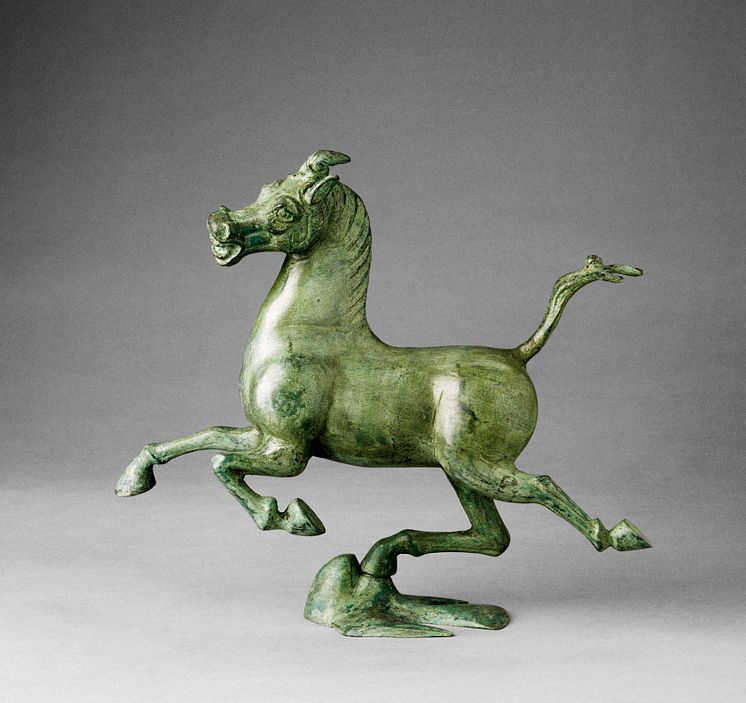
Image -
horses2
A famous bronze sculpture from Eastern Han Dynasty, about 200 AD. “Bronze pacing horse poised on a swallow with wings outstretched”. The sculpture does not prove that the DMRT3 mutation was present in China 2 000 years ago, but the researchers believe it is possible based on its widespread distribution and because the Vikings apparently used such horses when they colonized Iceland 1 000 years ago.
Photo: Erik Cornelius, Museum of Far Eastern Antiquities, Stockholm
- License:
- Creative Commons Attribution, no derivatives
With a Creative Commons license, you keep your copyright but allow people to copy and distribute your work provided they give you credit. You permit others to copy, distribute and transmit only unaltered copies of the work — not derivative works based on it.
- By:
- Photo: Erik Cornelius, Museum of Far Eastern Antiquities, Stockholm
- File format:
- .jpg
- Size:
- 1682 x 1585, 819 KB
